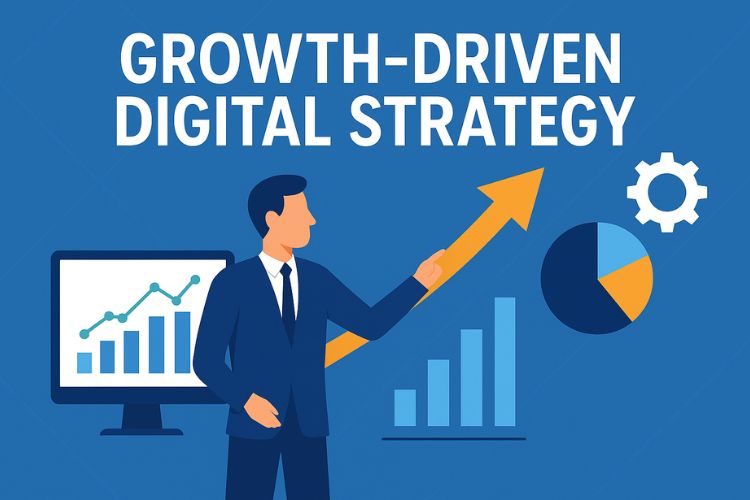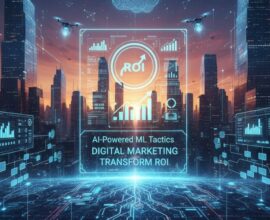Ever wondered why some businesses scale effortlessly while others struggle to find traction online? The difference often lies in a growth-driven digital strategy—one that adapts, evolves, and aligns with your business goals in real time. Whether you’re a startup or an established brand, this approach ensures that every marketing move counts.
Why “Growth-Driven” Beats “Traditional” Digital Strategy
Traditional marketing often feels like a one-time event—you plan, execute, and hope it works. A growth-driven digital strategy, however, functions like a living organism. It learns, refines, and scales continuously based on data and behaviour. Brands that invest in agile digital marketing models experience stronger customer retention and predictable growth.
For example, businesses leveraging Digital Marketing Services in Bhopal often focus on performance analytics, audience segmentation, and iterative optimization to maximize their return on ad spend. This adaptability is what sets growth-driven models apart from static marketing strategies.
The Core Pillars of a Growth-Driven Digital Strategy
1. Data-Backed Decision Making
According to DataReportal, over 5 billion people are now active online. That’s an enormous pool of potential customers—but only if you know how to read the data. Growth-driven strategies rely on continuous analysis of metrics like engagement rates, conversion patterns, and user intent to fine-tune campaigns.
- Set measurable goals: Traffic, leads, conversions—each needs its own KPI.
- Embrace A/B testing: Small tweaks to headlines or CTAs can dramatically improve performance.
- Use AI insights: Predictive analytics can forecast which audience segments are most likely to convert.
2. Audience-Centric Approach
A successful digital strategy starts with empathy—understanding what your audience truly values. Instead of pushing products, brands must tell stories, solve problems, and build relationships. It’s about shifting from “what we sell” to “why it matters.”
Interactive content like polls, quizzes, and user-generated campaigns are powerful tools to strengthen emotional connections and gather valuable insights simultaneously.
3. Agile Execution and Continuous Optimization
Unlike conventional campaigns that wait for post-launch reports, growth-driven strategies are built to evolve. Think of it as “launch, learn, improve.” Each phase feeds into the next, ensuring that the strategy becomes sharper over time.
- Analyse live metrics weekly—not quarterly.
- Update website UX based on heatmaps and session recordings.
- Leverage automation for faster responses to leads and customer feedback.
Integrating SEO and Content for Sustainable Growth
In today’s competitive digital landscape, visibility is everything. A robust SEO plan ensures that your content not only attracts users but also converts them. This is where SEO Services in India become invaluable—combining technical precision with storytelling finesse to improve rankings and build trust.
To keep up with evolving search algorithms, growth-driven digital strategies focus on:
- Content freshness: Regular updates signal relevance to both users and search engines.
- Mobile optimization: With over 60% of searches on mobile devices (Pew Research), responsive design is non-negotiable.
- Voice and AI search: As smart assistants grow, optimizing for conversational keywords is a must.
Embracing Technology for Scalable Success
Automation, AI-driven personalization, and data integration platforms are no longer futuristic—they’re the backbone of successful growth-driven strategies. Tools like HubSpot, Google Analytics, and Meta Ads Manager allow marketers to test, learn, and scale faster than ever before.
However, technology is only as good as the human strategy behind it. True growth stems from blending data intelligence with creative intuition—a balance of science and storytelling that resonates with your audience.
FAQs About Growth-Driven Digital Strategy
1. What makes a digital strategy “growth-driven”?
It’s designed to evolve continuously. Instead of static plans, growth-driven strategies rely on real-time feedback, data analysis, and constant optimization for better ROI.
2. How often should a business update its digital strategy?
Ideally, review core elements every 3–6 months. However, key metrics like engagement or conversions should be monitored weekly for quick pivots.
3. Is a growth-driven approach suitable for small businesses?
Absolutely. It’s scalable and cost-efficient. Small businesses benefit from testing ideas quickly without committing large budgets upfront.
4. Which industries benefit most from growth-driven marketing?
Almost all—especially eCommerce, healthcare, education, and tech startups that rely on measurable and adaptive marketing strategies.
Also Read >> Must Know Marketing Strategies for the Education Sector
Final Thoughts
A growth-driven digital strategy isn’t about moving fast—it’s about moving smart. Businesses that continually learn, optimize, and personalize their marketing efforts are the ones that truly thrive in the digital era. Growth isn’t a one-time event; it’s an ongoing journey built on curiosity, innovation, and adaptability.
Blog Development Credits:
This blog was ideated by Amlan Maiti, researched and written using advanced AI tools like ChatGPT, Gemini, and Copilot. It received expert SEO refinement from Digital Piloto PVT Ltd.





